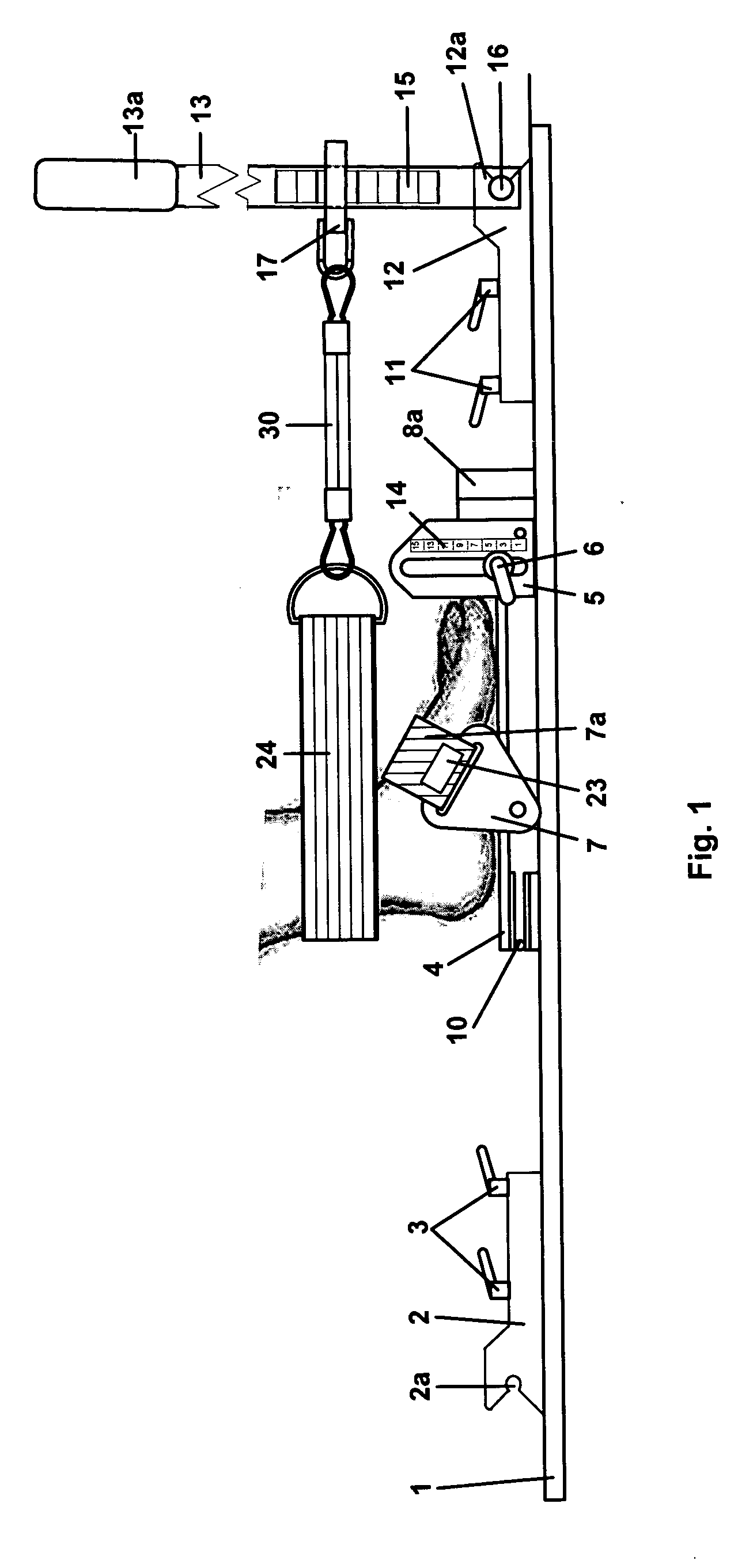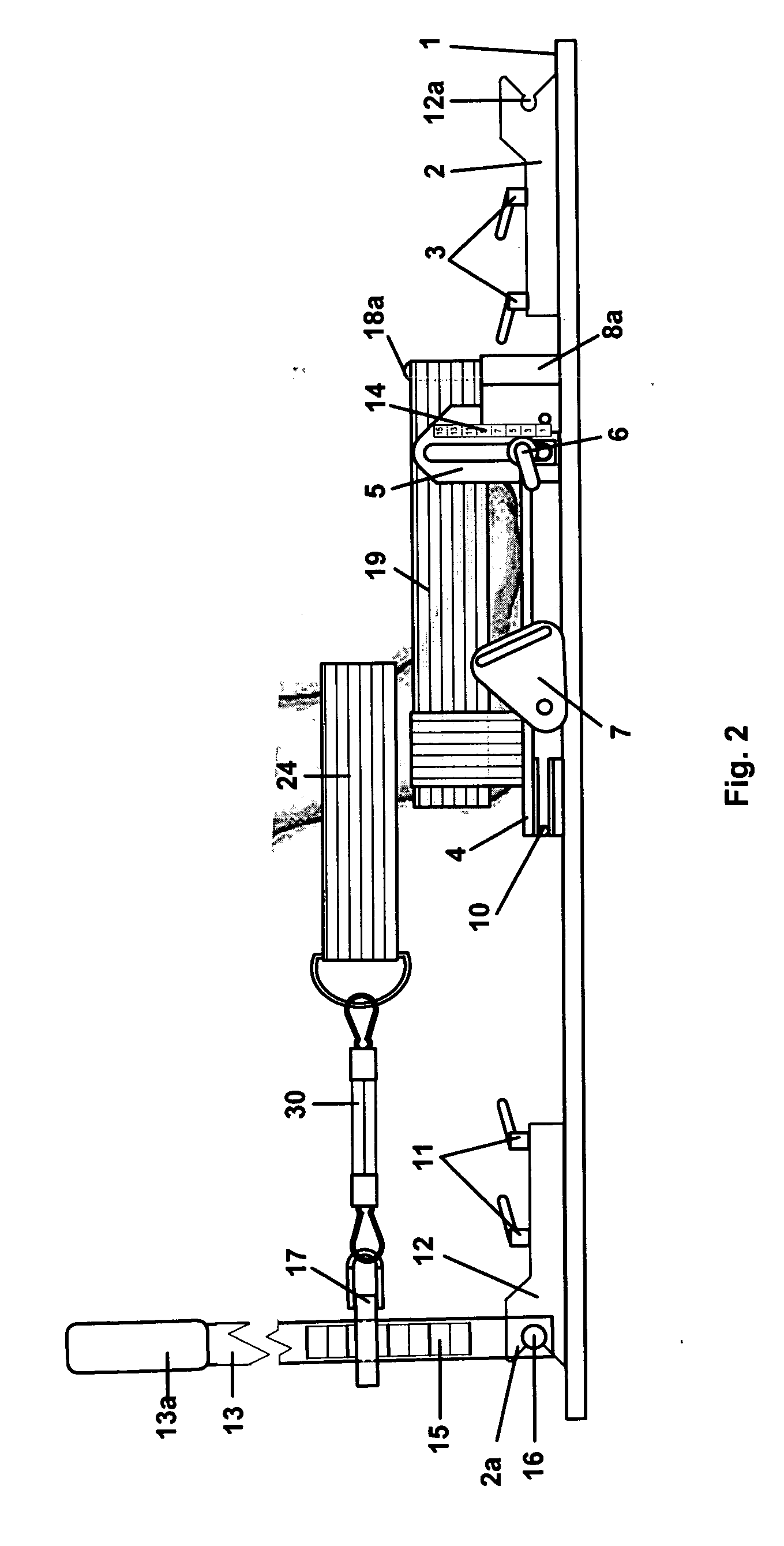Method and apparatus for anterior and posterior mobilization of the human ankle
a human ankle and anterior and posterior technology, applied in the field of human ankle anterior and posterior mobilization, can solve the problems of difficult to quantify the force of manual mobilization, difficulty in transporting, and difficulty in transferring accessories, etc., and achieve the effects of easy transportation, reduced pain of patients from injury/surgery, and increased range of motion and strength
- Summary
- Abstract
- Description
- Claims
- Application Information
AI Technical Summary
Benefits of technology
Problems solved by technology
Method used
Image
Examples
Embodiment Construction
[0050] A more complete understanding of the invention may be obtained by reference to the drawings, in which:
[0051]FIG. 1 is an elevation view of the present invention in the anterior mobilization configuration, with the Ankle Mortise Strap, force strap and, force lever installed;
[0052]FIG. 2 is an elevation view of the apparatus of FIG. 1 in the posterior mobilization configuration, with heel cup, Ankle Mortise Strap, force strap and, force lever installed;
[0053]FIG. 3 is an elevation view of the apparatus of FIG. 1 with the footplate in the horizontal position;
[0054]FIG. 4 is an elevation view of the apparatus of FIG. 1 with the footplate elevated to a maximum angle;
[0055]FIG. 5 is a plan view of the apparatus shown in FIG. 1;
[0056]FIG. 6 is a view of the force lever with hook anchor point of the apparatus shown in FIG. 1;
[0057]FIG. 7 is a view of the inside of the heel cup strap with anchor pins installed and stirrup strap halves disconnected;
[0058]FIG. 8 is a view of the...
PUM
 Login to View More
Login to View More Abstract
Description
Claims
Application Information
 Login to View More
Login to View More - R&D
- Intellectual Property
- Life Sciences
- Materials
- Tech Scout
- Unparalleled Data Quality
- Higher Quality Content
- 60% Fewer Hallucinations
Browse by: Latest US Patents, China's latest patents, Technical Efficacy Thesaurus, Application Domain, Technology Topic, Popular Technical Reports.
© 2025 PatSnap. All rights reserved.Legal|Privacy policy|Modern Slavery Act Transparency Statement|Sitemap|About US| Contact US: help@patsnap.com



